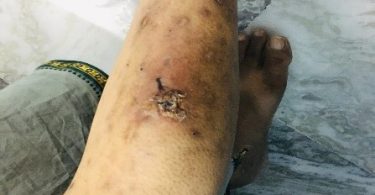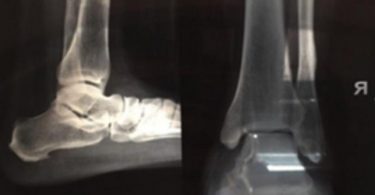●Introduction
• A fibroadenoma feels like a firm, smooth or rubbery lump in the breast with a well-defined shape.
• A fibroadenoma is a noncancerous tumor in the breast that’s commonly found in women under the age of 30.
• It’s painless and moves easily under the skin when touched.
• The tumor consists of breast tissue and stromal, or connective tissue.
• Fibroadenomas can occur in one or both breasts.
• Fibroadenomas develop from the lobules. The glandular tissue and ducts grow over the lobule to form a solid lump.
●Types
• There are four types of fibroadenomas: simple fibroadenomas, complex fibroadenomas, juvenile fibroadenomas, and giant fibroadenomas
• The simple tumors don’t increase breast cancer risk and look the same all over when viewed under a microscope.
• The complex tumors contain other components such as macrocysts, fluid-filled sacs large enough to feel and to see without a microscope. They also contain calcifications, or calcium deposits. Complex fibroadenomas can slightly increase risk of breast cancer.
• Juvenile fibroadenoma is found in girls and adolescents between the ages of 10 and 18. They can grow large, but most shrink over time, Some disappears.
• Giant fibroadenoma can grow to larger than 2 inches.
●Causes
• Hormones such as estrogen may play a part in the growth and development of the tumors.
• Taking oral contraceptives before the age of 20 has been associated with a higher risk of developing fibroadenomas as well.
• Fibroadenomas occur more often during reproductive years, can become bigger during pregnancy or with use of hormone therapy, and might shrink after menopause, when hormone levels decrease.
●Sign and Symptoms
• A lump that is hard, not movable, or feels attached to the chest wall, with or without pain, perhaps with dimpling or puckering of the breast, this may be a sign of breast cancer.
• A lump that is movable and feels unattached to the chest wall, is a cyst or a fibroadenoma.
• Pain or a feeling of fullness in one or both breasts, that’s not related to premenstrual swelling.
• Sometimes a painful lump, with or without redness, is the first sign of an infection.
• The masses may feel tender or painful, especially right before menstruation, when they may swell due to hormonal changes.
• Fibroadenomas are so mobile that women sometimes refer to them as “breast mice,” as they tend to run away from their fingers.
●Risk Factors
• Fibroadenomas are most common in women who are between 15 and 30 years old and in pregnant women.
• It is not seen after menopause unless using of hormonal therapy.
• Body mass index and the number of full-term pregnancies were found to have a negative correlation with the risk of fibroadenomas.
• There are no known genetic factors that influence the rate of fibroadenomas.
●Treatment
• Fibroadenomas can be expected to shrink naturally and so, most are simply monitored.
• Generally, surgery is only recommended if the fibroadenoma gets larger or causes increased symptoms.
• There are several non-invasive options for the treatment of fibroadenomas, including percutaneous radiofrequency ablation(RFA), cryoablation, and percutaneous microwave ablation.
• Sonomammography and FNAC- fine niddle aspiration cytology should be done in clinical investigation.
●Homoeopathic Medicines
■Calcarea Fluorica
• Calcarea fluorica is the best homoeopathic medicine for treating fibroadenoma of the breast, where the nodes are as hard as a stone.
• Calcarea fluorica has a strong tendency to dissolve these hard knots in the breast.
• Wonderful results of use of calcarea fluorica in women with stony hard nodes in the breast.
• These breast fibroadenomas get smaller and the hard lumps get soften, followed by completely disappears with the medicine.
■Conium
• Conium is great medicine for treating glandular affections.
• Conium can be used with excellent results to treat tumors in mammary glands.
• Conium is preffered in cases where nodes in the breast are present with pain in the breast before and during menstruation.
• The pain usually gets worst upon touching.
• Conium helps in treating both the cyclic appearance of breast pain around the menstrual nisus and also the diminution of breast nodes.
■Graphites
• Graphites is wonderful medicine for treating tumors in the breast that are arising from some old scars in the breast.
• Old scars may have remained after healing of abscess in the breast.
• It works efficiently in the dissipation of these tumors, as well as scars disappear with this medicine.
• Nipples are sore, cracked and blistered.
• Cancerous diathesis in old cicatrices.
• Tendency to grow cystic tumours, wens.
• It has tendency to produce excoriations, cracks at muco-cutaneous junctions, nipples, and also in folds of skin.
■Phytolacca Decandra
• Phytolacca is natural homoeopathic medicine which can be beneficial for the treatment of fibroadenoma of breast when inflammation of breast associated with it.
• The breast is extremely sensitive, hard and painful.
• The glands in armpits may also enlarged.
• It provides great help in reducing inflammation and pain in breast initially, followed by completely disappearance of hardness.
• Heavy, Stony, Hard, Swollen or Tender Mammae, paining during suckling, spreading all over the body.
• Hard nodes in breast with enlarged axillary glands.
• Nipples cracked, very sensitive, inverted.
• Irritable breast before and during menses.
• Bloody, watery discharge from mammae.
• Affection of old cicatrices in mammae.
■Pulsatilla Nigricans
• Pulsatilla is a natural homoeopathic medicine that can be taken when nodes in the breast are accompanied by menstrual irregularity.
• The main menstrual irregularity noticed is suppressed menses for a long duration or scanty menses.
• Pulsatilla is of much help for girls at puberty suffering from lumps or nodes in breast.
■ Scrophularia nosoda
• Scrophularia nosoda is a rare but very significant homoeopathic medicine that can be used for dissolving the tumors, lumps, nodes or indurations in breasts.
• It is an extremely powerful medicine to dissolve and get rid of breast tumors.
• The chief clinical authority for scrophularia is Cooper, who has used it on some old indications.
• Nodosities in the breast is indication of Cooper’s. It has produced, according to Cooper, a sickly, giddy feeling, with a sense of weakness and sinking at pit of chest, too weak to speak; along with pain from forehead to back of head.
• It is mainly used in tincture form or first potency.





